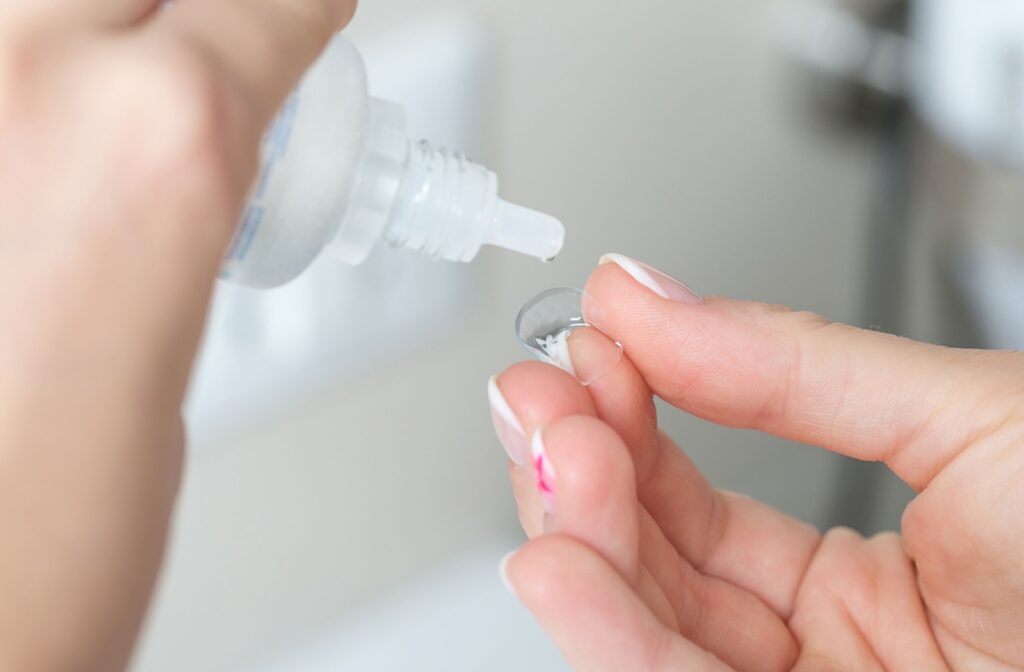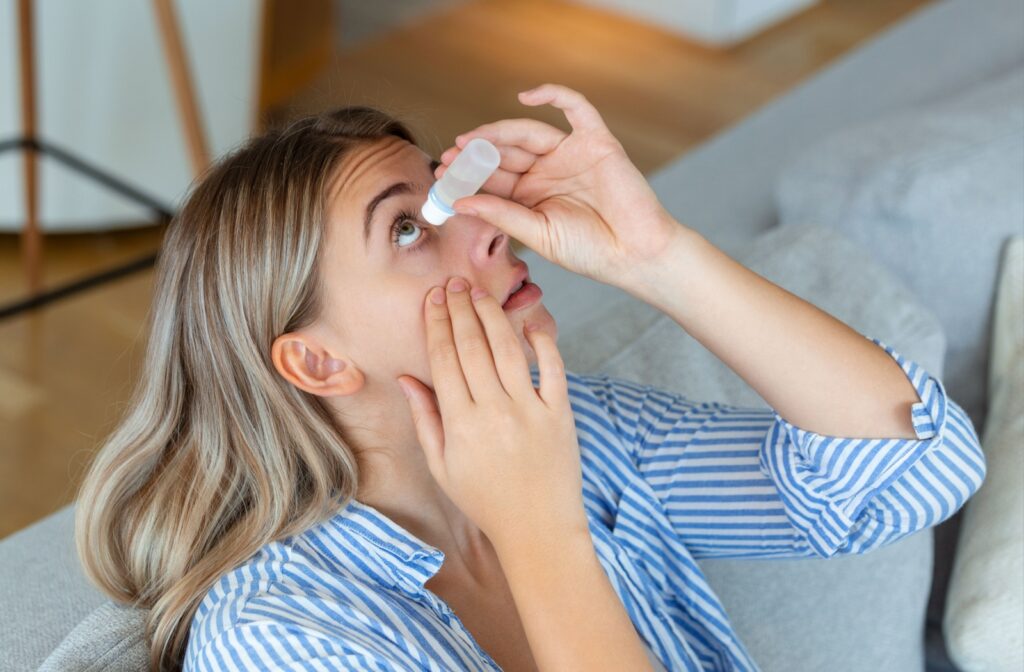Contact lenses are a massive step forward in vision correction for millions of people worldwide, offering freedom from glasses and clear sight throughout the day. But many contact lens wearers experience an uncomfortable side effect: dry eyes. If you’ve ever wondered whether your contacts are to blame for that gritty, irritated feeling, you’re not alone.
The short answer is yes: contact lenses can contribute to dry eye symptoms. But before you consider giving up your lenses entirely, it’s essential to understand why this happens and what you can do about it. The good news is that with the right approach, you can often continue wearing contacts comfortably while managing dry eye symptoms effectively.
Do Contacts Cause Dry Eye?
Contact lenses don’t directly cause dry eye disease, but they can make existing symptoms worse or trigger new ones. When you place a contact lens on your eye, it creates a barrier between your tear film and the surrounding environment. This barrier can disrupt your eye’s natural moisture balance in several ways.
Your tear film consists of 3 layers: an outer oil layer, a middle water layer, and an inner mucus layer. Contact lenses can interfere with this delicate system, leading to faster tear evaporation and reduced comfort. Some people are more susceptible to this disruption than others, which explains why some contact wearers never experience dry eyes while others struggle from day 1.
What Causes Dry Eye when Wearing Contacts?
Several mechanisms contribute to dry eye symptoms in contact lens wearers. Understanding these causes helps you identify potential solutions and work with your eye doctor to address them.
Reduced Blink Rate
When you focus on tasks like reading or computer work, you naturally blink less frequently. Since blinking spreads tears across your eye surface, reduced blinking can lead to dry spots under your contact lenses.
Tear Film Instability
Contact lenses can disrupt the stability of your tear film, causing tears to evaporate more quickly than normal. This is particularly problematic with older or damaged lenses that have accumulated protein deposits.
Lens Material
Different contact lens materials have varying levels of water content and oxygen permeability. Some materials may absorb moisture from your eyes, while others might not allow adequate oxygen flow, both of which can contribute to dryness.
Poor Lens Fit
Contacts that don’t fit properly can move excessively on your eye or create tight spots that restrict tear circulation. This mechanical irritation can trigger dry eye symptoms and discomfort.
Environmental Factors
Air conditioning, heating systems, wind, and low humidity can all increase tear evaporation, making dry eye symptoms more pronounced when wearing contacts.
Symptoms of Dry Eye with Contact Lenses
Recognizing dry eye symptoms early allows you to take action before the condition worsens. Contact lens-related dry eye can manifest in various ways, and symptoms often worsen throughout the day as you continue wearing your lenses.
Common symptoms include a gritty or sandy sensation in your eyes, as if there’s something stuck under your lenses. You might also experience burning or stinging, particularly when you blink or when your contacts move on your eyes.
Visual symptoms can include blurred vision that comes and goes, especially toward the end of the day. Your eyes may feel tired or strained more quickly than usual.
Physical signs include excessive tearing, redness, and sensitivity to light. Some people also experience mucus discharge or notice their contacts moving around more than usual on their eyes.

Tips for Managing Dry Eye with Contact Lenses
Managing dry eye while wearing contacts requires a multi-faceted approach.
Switch to Moisture-Rich Lenses
Modern contact lens technology offers materials specifically designed for those with dry eye. Silicone hydrogel lenses provide excellent oxygen permeability while maintaining moisture, and some lenses incorporate special moisturizing agents that help retain water throughout the day.
Daily disposable lenses can be particularly beneficial since you get a fresh, clean lens every day without protein buildup that can contribute to dryness.
Use Artificial Tears
Rewetting drops designed specifically for contact lens wearers can provide immediate relief from dry eye symptoms. These drops are formulated to be compatible with contact lenses and won’t damage the lens material. Choose preservative-free options when possible, as preservatives can sometimes cause additional irritation.
Follow a Consistent Lens Care Routine
Proper lens hygiene is crucial for preventing protein and lipid deposits that can worsen dry eye symptoms. Clean and disinfect your lenses according to your eye doctor’s instructions, and replace them as scheduled.
Blink More Often
Conscious blinking helps spread tears evenly across your eye surface and under your contact lenses. Make an effort to blink fully and frequently, especially when doing close work or staring at screens.
Adjust Your Environment
Use a humidifier in dry indoor environments, especially during the winter months when heating systems can reduce air moisture. Position yourself away from direct airflow from fans, air conditioning vents, or heating systems.
Limit Contact Lens Wear
Give your eyes regular breaks from contact lenses. Consider wearing glasses for part of each day, especially during activities that might worsen dry eye symptoms, like computer work or reading.
How Is Dry Eye Treated?
When lifestyle modifications and over-the-counter solutions aren’t enough, professional dry eye treatment may be necessary. Treatment options may include:
- Prescription eye drops that help increase tear production or reduce inflammation
- Specific contact lens materials or designs that work better with your tear film
- Innovative treatments like intense pulsed light therapy can address the underlying causes of dry eye
- Temporary or permanent punctal plugs can help retain tears on your eye’s surface longer
Find Relief at Coast Optometry
Don’t let dry eye symptoms force you to give up the convenience and freedom of contact lenses. Our passionate team at Coast Optometry in Huntington Beach can help you uncover eye health risks that are leading to your dry eyes and provide tailored treatment and advice to keep your eyes comfortable with contacts.
Book an appointment online today and take the first step toward more comfortable contact lens wear.



